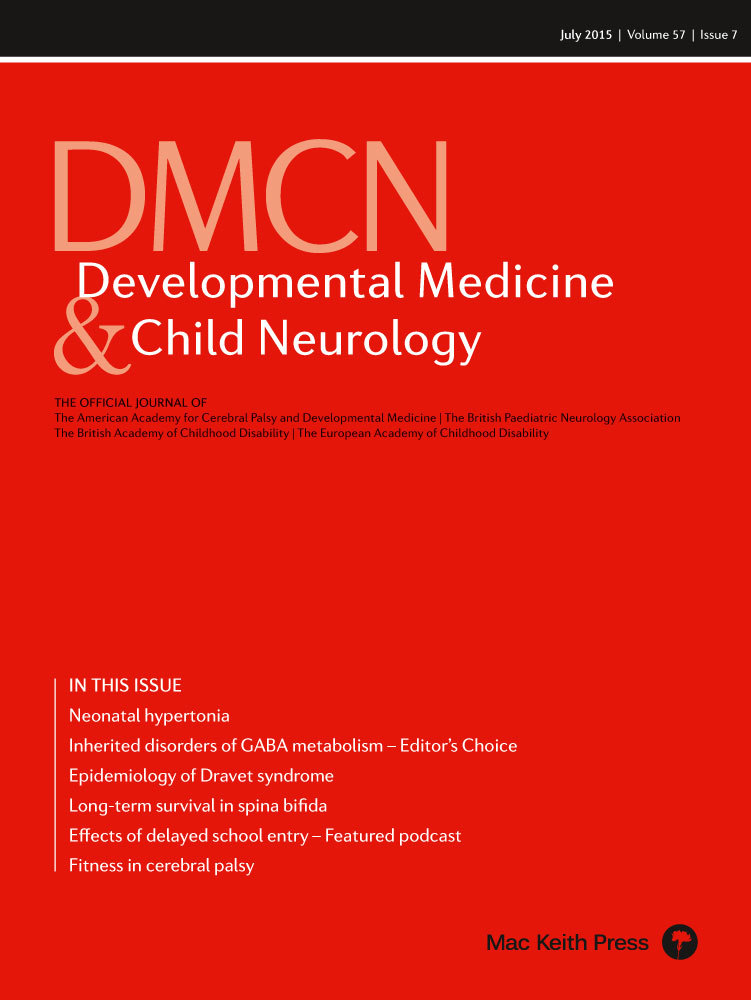For and against the term cerebral palsy
In the February 2015 issue of DMCN, Mrs Michele Shusterman argued from a mother's perspective that the diagnosis ‘cerebral palsy’ (CP) is misleading and unhelpful. She suggests it should be replaced by a term that more accurately reflects the multiple problems a child with an early brain impairment can experience: ‘early developmental brain injury/interference’ or EDBI.1 Subsequent correspondence has supported this proposal.
Cerebral palsy was originally coined by William Osler in the late 1880s, mainly to distinguish weakness due to brain damage from weakness due to poliomyelitis. At that time there were no paediatric neurologists and the specialties of neurology and paediatrics were in their infancy. Pathology could only be confirmed by post-mortem examination. Since then clinical experience and observation has accumulated, while neuroimaging and functional technologies now allow sequential assessment of what is happening in the living brain, not to mention the spinal cord and peripheral nervous system as well. The nature, site, and severity of the wide range of different pathologies which are currently recognized determine which or to what extent cerebral functions are impaired, such as cognition, learning, behaviour, vision, hearing, motor abilities, as well as the risk of problems such as hydrocephalus or epilepsy. Preventative measures also vary according to the underlying cause.
From a neurological perspective using CP as an umbrella term for a mixed group of unrelated pathologies with differing clinical effects has rightly been questioned, especially as it can also lead to diagnostic complacency. What, for example, is the cause in a child with normal neuroimaging? By definition, the features that distinguish CP are the exclusion of progressive pathology and the timing, in that the disturbance must affect the fetal or infant brain, which means that developing rather than established function is impaired. Even here there is a problem, since the development of motor and other functions does not stop after infancy but continues throughout childhood and beyond. At present a motor impairment due to a brain injury at 6 months of age is classified as CP, but not if it is due to a brain injury at 30 months of age.2
However, the term still has a very important function. The effects of an insult on the developing brain do need to be highlighted and separated from those on the developed brain, although this applies to all the cerebral functions listed above, not just the motor aspects. The causes are individually rare, so in isolation would become yet more orphan diseases. Putting them together under the same umbrella is enormously helpful when it comes to treatment, support, and research funding. As stated in the annotation to the 2007 definition, the term CP ‘is established in the literature and is used universally by clinicians, therapists, epidemiologists, researchers, policy makers, health care funding organization and laypersons’, and ‘has been retained to relate future research in CP to existing published work’.2 Parents regularly report that saying their child has CP, rather than for example spastic hemiplegia, unlocks previously unavailable educational resources and social services. Research funding from both government and charitable sources would be more difficult to obtain without a well-recognized term. That research has given better insight into causal pathways and possible preventative interventions, and helped decide which treatments are effective and which are less so.
Over 40 years ago Dr Ronald MacKeith was arguing that children with CP need comprehensive management.3 Since then a holistic approach has become the expectation, as detailed in the recent book published by Mac Keith Press.4 Good clinical practice is already recognized to encompass an aetiological diagnosis, a detailed description of all the impairments affecting a child, the associated limitations of activities and participation, and appropriate management. If a new term is considered, one such as ‘developmental brain (or cerebral) impairment’ would be a broader concept since it would cover a wider age range and include additional pathologies not typically associated with motor problems, such as the sequelae of neonatal hypoglycaemia. However, if we continue to use ‘cerebral palsy’, we must ensure all the possible implications for a child are emphasized to the same degree as the motor problems if we are to address Mrs Shusterman's justified concerns.




